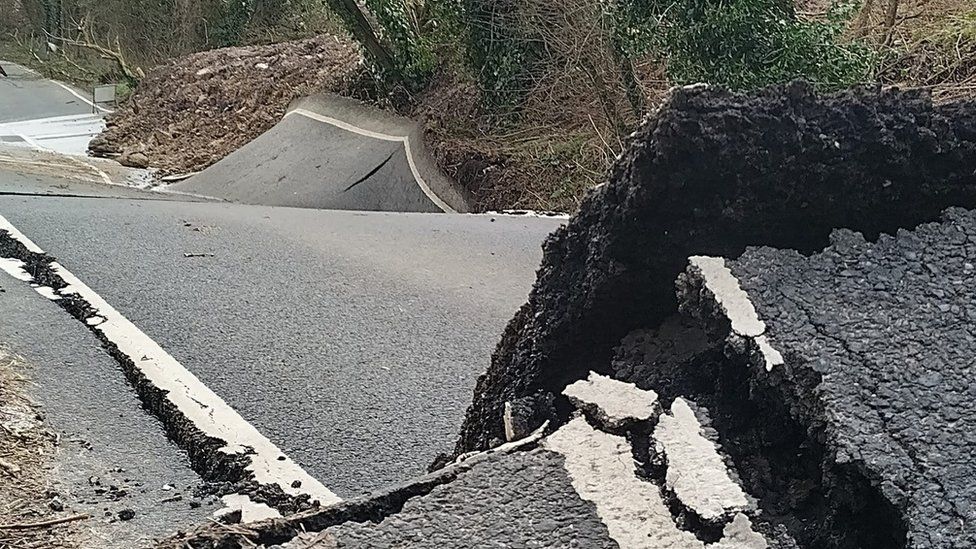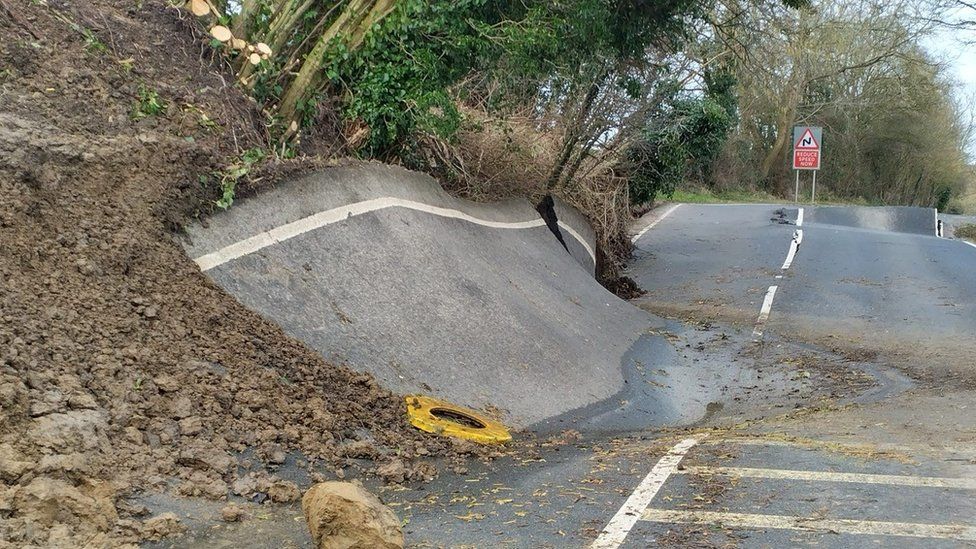Thumbnail History:
The present day parish of Lyneham lies in the north of the county of Wiltshire and is made up of the villages of Bradenstoke and Lyneham and the outlying hamlet of Preston. Originally the hamlet of West Tockenham was part of the parish but in the 1960s it was proposed that it became part of the parish of Tockenham.
Bradenstoke, which lies in the north west of the parish, was originally the main area of settlement. It was then known as 'Stoche', (meaning settlement), and the area was well wooded, having lain within the boundaries of Braydon Forest. It was from the 12th century that the settlement was called Bradenstoke, and this was applied to the area surrounding Bradenstoke Priory, which was founded during that time.
The name 'Clack', (which means hill), first appears in this parish in 1310 and refers to a mound lying to the north-east of Bradenstoke Farm. Until the later 19th century this name was applied to the hamlet which followed the road to the priory. The area was also known by the name 'Lousy Clack', (taken from the teutonic 'lloew', meaning hill), and resulted in its inclusion in the local rhyme about places in the neighbourhood with steep escarpments or cliffs. The rhyme runs:
White Cleeve, Pepper Cleeve, Cleeve and Cleavancy,
Lyneham and Lousy Clack, Cris Mavord and Dauntsey.
The name Bradenstoke was revived in the 20th century and by 1968 the whole village was known by this name.
Lyneham, which is nearly a mile east of Bradenstoke, was mentioned for the first time in 1224 and was probably included in the Domesday holding of 'Stoche'. In 1198, West Tockenham was known simply as Tockenham but by 1293 was known as West Tockenham in order to distinguish it from East Tockenham in the adjoining parish. Preston, which consisted of two farms, a Methodist chapel and a few cottages in 1968, lies a mile and a quarter south-east of Lyneham itself.
The western and southern parts of the parish are located on the Corallian ridge, which runs from Wheatley to Calne. The northern part of the ridge determines the northern, western and part of the southern boundaries of Lyneham. The two villages and Preston all lie on a part of the ridge formed of Coral Rag. To the west and south of the parish the Corallian ridge can rise to heights of 400 feet and west of Bradenstoke up to over 475 feet. The dip slope of this ridge gradually falls away to the south-east.
It is due to its elevated status that the parish has an open outlook with little tree growth, except in the north where Lilly Brook has eroded the sand beneath Coral Rag at a place called Blind Mill. This has resulted in the formation of a steep gully that is thickly wooded.
North and east of Preston is a network of streams which are tributaries of Cowage Brook and they converge above Littlecott (Hilmarton). Land was mostly used as pasture although some arable farming was carried out on the lighter, sandier soils around Shaw Farm.
The Name "Barrow End", which is to the north-west of the village of Lyneham implies that there may have been historic activity there. Two sets of coins have been found in the parish. Roman coins were found near Bradenstoke Priory and Constantinian coins have been found at an undisclosed area of the parish. A skeleton, of unknown date, was found near West Preston farm. Lyneham Camp, a motte and bailey earthwork which is thought to be of Norman origin, lies in the north of this parish near Hillocks Wood. Another Norman earthwork, Clack Mount, rises at the highest point of the Corallian ridge behind Bradenstoke Farm.
At the time of the Domesday Survey the population is likely to have been between 165 and 195 people according to modern Domesday interpretations. The population of Lyneham began to rise after 1801 until 1841 when there were 1,317 people. This included 179 labourers who were laying the GWR line in the adjacent parish. After this time the population declined until the arrival of the RAF base in 1940. This led to a sudden increase in population figures for the parish.
Little has changed with regard to the roads of the parish since the 18th century. Lyneham Green was the junction of all roads as it is today. The Calne - Lyneham road followed its present course from 1736, being known as Even Lane at that time, and ran through the village. From 1773 the Swindon - Chippenham road entered from Dauntsey to the east of Bradenstoke Priory and then became the main street of Bradenstoke. During the Middle Ages this road was probably very important as it served the priory and Clack Spring and Fall fairs. After Bradenstoke the road ran north eastwards towards Tockenham. In 1887 a bypass was built to the north of Bradenstoke and after that the road at the heart of Bradenstoke declined in importance. By 1968 the Swindon - Chippenham road was the only main road in this parish.
The arrival of the airbase led to the disappearance of two roads in the parish. One led to Lyneham Court Farm and on to Stockham Marsh in Bremhill, whilst the other travelled from Lyneham Court towards Freegrove. The eastern boundary of this parish ran down the west side of a road called Trow Lane in 1968. A small lane turns off this road westwards to Church End, where an early 19th century toll house once stood and survived until around 1960.
Tockenham reservoir was constructed around 1810 to feed the Wilts and Berks Canal, which had been built north of the parish by 1801, and partly fell within the parish north-east of Blind Mill. This reservoir was later abandoned when the Swindon section of the canal was closed in 1914. By 1968 the section in Lyneham had been revived for boating and fishing purposes.
Bradenstoke, flanked to the south by the airfield, remained relatively unchanged, certainly up to the 1970s, and still resembles the medieval village dominated by Bradenstoke Priory in the south-west. However, most of the priory buildings were removed around 1930. The village itself consists of a single narrow street, which is built up on both sides. The middle of the street widens and on its south side stands the base and part of the shaft of a cross that was first mentioned in 1546-47. South of this stands the church of St Mary which was built in 1866. Across the street from the church is Providence Chapel dating from 1777. A few houses have exposed timber framing while others still show traces of timber construction. Some may be of medieval origin, this includes a house at the corner of the road to Dauntsey, which has heavy curved braces to its framing. A house west of Providence Chapel, which is now three dwellings, has a jettied upper storey with a continuous bressummer and probably dates from the early 16th century. Two brick houses carry date-stones of 1762 and 1788. Several houses with thatched roofs and others with stone slates give a picturesque look to the street.
At Preston, two farm houses are largely early 18th century. Preston East Farm however, includes a 17th century building. South of Preston West Farm is an older house, the main range of which was originally timber framed and of medieval cruck construction. Two of its cruck trusses have survived. There is a group of cottages near the ford at the eastern end of Preston, these are also timber framed. Shaw Farm, east of Trow Lane, is an 18th century building.
The RAF station's arrival in 1940 and its housing developments have obscured parts of the village of Lyneham, straddling the Hilmarton - Lyneham road. The nucleus of the village lay to the north where houses are still grouped around the green. Also at that time the green was crossed by the Hilmarton and Chippenham - Swindon roads. Since the Second World War Lynehams's development was limited to an area west of Church End. This was where the new schools were located, surrounded by housing for the RAF base. There was also an extension to this housing in the apex of the Preston and Hilmarton roads. The airfield of the RAF base lies to the west of the Calne - Lyneham road. It stretches the width of the Corallian ridge from Bradenstoke to the edge of Catcomb Wood. RAF Lyneham was opened in 1940 and assumed full station status in 1942. By 1968 it covered over 1,200 acres and was the main employer in the parish. Land which had belonged to Lyneham Court Farm, Church Farm, Cranley Farm and Bradenstoke Abbey Farm was now used to create the airfield.
Since the arrival of the airforce base the village has grown dramatically and can now boast of having many shops and services, as is often the case of towns near a military base. In 1968 the C130 Hercules, built by Lockheed, arrived and the station became home to the RAF's fleet of Hercules. De Havilland Comets were also stationed here at the same time as 216 Squadron. These aircraft were used for transporting the Royal Family and other VIPs. One of them, "Sagittarius", is now the RAF base's gate guardian. In the 1970s Lyneham became the main tactical transport base for the RAF in the United Kingdom. The Hercules have assisted in moving both troops and supplies in times of conflict, famines or other emergencies, and are now a common sight in the skies over Lyneham and the surrounding countryside. They are a much loved aircraft by pilots and locals alike being affectionately known as "Fat Albert".
Sadly, however, in July 2003 the MOD announced plans to close the base by 2012 and to transfer the 50 strong Hercules Fleet to the airbase at Brize Norton in Oxfordshire. This will lead to 580 jobs being lost on the base and the remaining 1920 jobs being re-deployed to other sites.
This will have an effect on the economic welfare of Lyneham and on its social climate too but we will have to wait and see exactly what these effects are likely to be.
|










